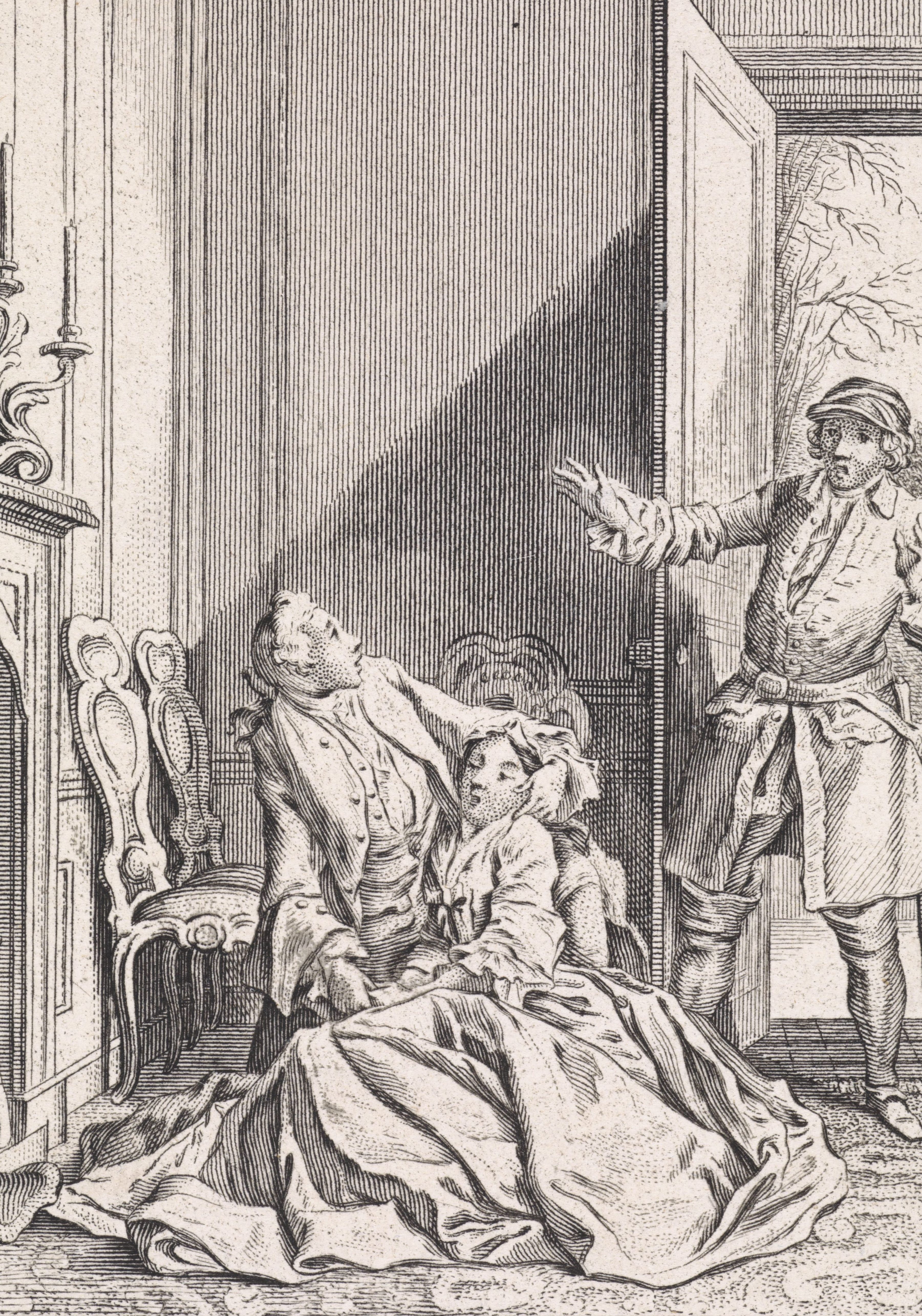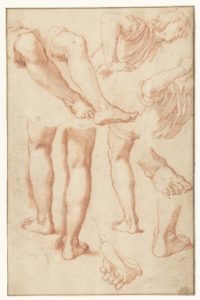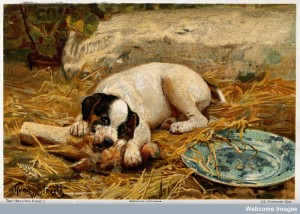
Today (18th October) is World Menopause Day, So we thought we’d have a look at women’s experiences in the past. Menopause was not a word that had any currency in the period covered by this blog. In fact, the word was not seen in print until 1858 and then was a borrowing from French ‘ménopause’.[1] The most usual references to this event appear in early modern texts in phrases such as ‘the cessation of the terms’.
What might surprise readers is how familiar early medics were with the stage now known as the perimenopause. This is the time in the years leading up to menopause when women might experience erratic menstruation, irregular, or changing between light and heavy flows.

The time women might expect their periods to stop was discussed in medical texts from ancient times. Soranus, in the second century BCE, wrote
Now of those [women] who do not menstruate, some have no ailment and it is physiological for them not to menstruate: either because of their age (as in those too young or on the contrary too old) or because they are pregnant, or mannish, or barren singers and athletes in whom nothing is left over for menstruation.[2]
Soranus explains that physicians ‘must, therefore, note the patient’s age and this is found out by inquiring after the number of years’ and if she is aged between forty and fifty then one should expect menstruation to diminish and cease. In the late seventeenth century, the anonymous author of Aristotle’s Masterpiece writes:
At fourteen Years of Age, commonly the Terms in Virgins begins to flow, and then they are capable of conceiving, and so continue generally till forty four; at what time, for the most part, the Eflux being stayed they are no longer capable of Generation, unless such as are exceedingly healthful, strong of body, and have used themselves to Temperance, who have appear’d to be delivered of Children till fifty five Years.[3]
For John Friend, author of a famous Latin monograph on menstruation in 1703, the most likely age for menopause was the climacteric age of forty-nine: ‘The menstrous Purgation, or a flux of Blood issuing from the Uterus every Month, usually begins its Periods at the SecondSeptenary, and terminates at the Seventh, or the Square of the number seven’.[4] Once a woman has reached the proper age for the menopause Friend suggests that there is little one can do to restore a woman’s fertility:
If the Woman be stricten in years, and it cease to be with her after the Custom of Women, that is her Courses are stayed, which in some happens sooner, and some later, and between 44 and 55 with them all unless strong preparatives, viz. an Extraordinary diet, easie longing, and moderate exercise restore them, those Women must despair of further Generation: for as the learned in this Art frequently observe, where there is neither Buds nor Blossoms there can be no Fruit. [5]
While the language we use didn’t exist in the past, medical writers were familiar with any number of disparate symptoms menopausal women are prone to, and very much saw the perimenopausal, erratic bleeding stage as part of the process. A Rational Account of the Natural Weaknesses of Women, which is also one of very few texts to deal with painful periods discusses menopausal disorders, describes how:
And it wil not be amiss to touch upon the Disorders that most Women labour under, when being between Forty or Fifty Years of Age, their Courses begin first to dodge, and at last to leave them; for then they are frequently troubled with a severe Pain in the Head and Back, and about the Loyns; sometimes also with Colick Pains, Gripes and Looseness; at other times, with Vapours to violent degree; likewise feverish Heats and wandering Rheumatick Pains, &c.[6]
And again, the uncomfortable symptoms the menopause might cause, particularly in the perimenopausal stage, were easily treated according to one anonymous ‘physician’ advertising his miracle cure of a balsam:
Such Women therefore that have regard to their own welfare, will have recourse to this Electuary at such time as the Courses of Nature are about to leave them, and not as many do, take little or no care concerning it, notwithstanding Nature is always so kind to let them know, that she wants the help of Art at that Juncture, by their Courses dodging them, and their flowing but poorly, and sometimes not at all, ebbing and flowing untimely and irregular, sometimes paler and thinner, at other times in smaller quantity and foul, which is warning sufficient, that she stands in need of help, and that they ought at that time to be settled and disposed after a particular manner, and not be neglected as many Women to their Sorrow have done, who for want of such care, are now complaining of either Vapour, Flushings all over the Body, the Whites in abundance, pursiness at Stomach, loss of Appetite, Cholicks, Faintings, or other the like Weaknesses and Indispositions, which if not timely remedied, brings Ulcers or Cancers in the Womb, Dropsies, Consumptions or other fatal Distempers.[7]

Any woman experiencing all these symptoms may not perhaps make the link with impending menopause, but would certainly be in discomfort, and these symptoms seem to be well-known enough to have appeared together in advertising material. Menopause was caused by the natural ‘drying out’ of the body which was part of the ageing process in the humoral system, and it was thought that the fibres, coats, and vessels of the uterus become dry and calloused in the same way that skin becomes hardened and wrinkled. So while they did not have the same vocabulary as us, it is clear early modern women had there fair share of menopausal symptoms in advance of the eventual end of menstruation.
_________________________________________________
[1] ‘ménopause’ was in print in France from 1823 (OED).
[2] Soranus’ Gynecology, trans. by Owsei Temkin (Baltimore and London: Johns Hopkins University Press, 1991) p. 133.
[3] Anon., Aristotle’s Masterpiece: Or, The Secrets of Generation Display’d in all the Parts Thereof (London: Printed for J. How, 1684), p. 8-9.
[4] Emmenologia, trans. by Thomas Dale (London: For T. Cox, 1729), p. 1.
[5] Emmenologia, pp. 83-84.
[6] Anon. (London: Printed and Sold at the Two Blue posts and A. Dodd, 1714), p. 31.
[7] Anon., An Account of the causes of some particular rebellious distempers viz. the scurvey, cancers in women’s breasts, &c. vapours, and melancholy, &c. weaknesses in women (London: s.n., 1670), p. 52.



A look at early modern medical writing in Latin and at female ego-documents very much supports your findings: the issue was widely discussed and a major cause of concern, even though, of course, the medical and lay understanding changed over time. If you are curious, some time ago, I published a little overview: Stolberg, Michael: A woman’s hell? Medical perceptions of menopause in preindustrial Europe. In: Bulletin of the history of medicine 73 (1999), S. 408-428.
Thank you yes a great article.
fascinating, particularly from the perspective of someone who has just been through it, and what a wonderful thing the menopause is, a cessation of all the pain, angst, migraine, sickness and mess. I note they don’t point out what a boon it is to women who have bad periods, and also a rest from all the childbearing women of the time had to go through.
No funnily enough they don’t. One physician did say God had made the ‘menopause’ because otherwise there would be too many children for earth’s resources – I think the quotation is in Michael’s wonderful essay below. (Sara)